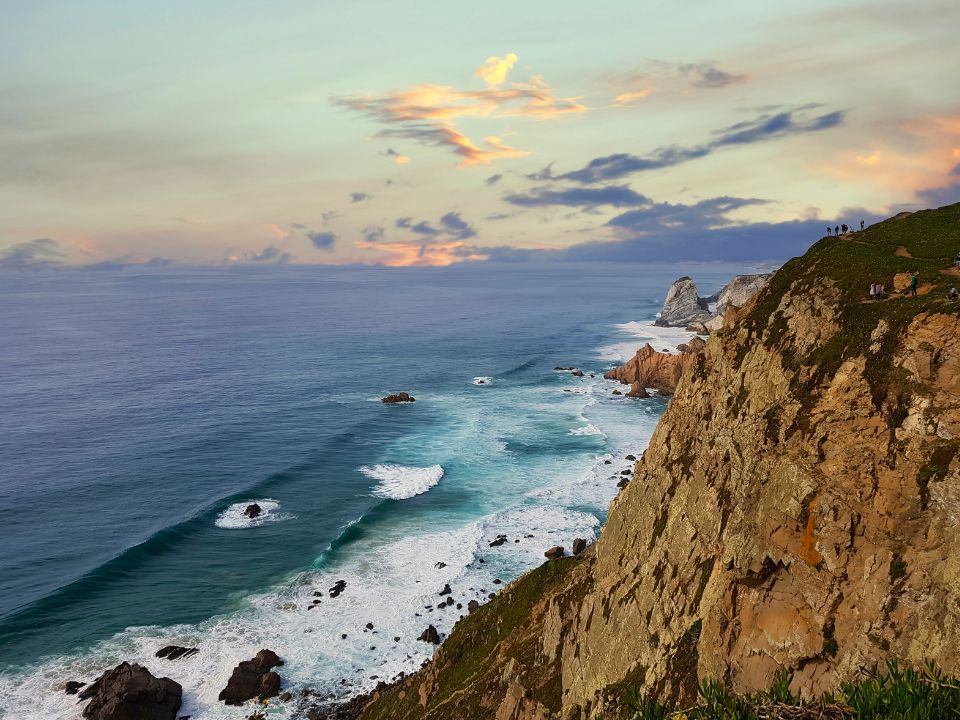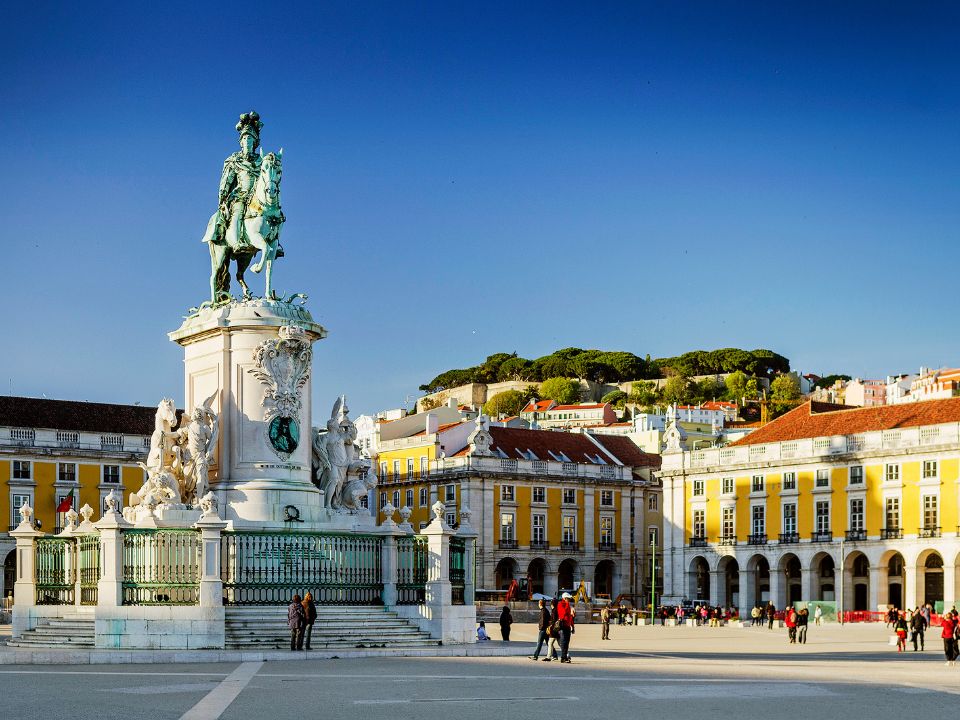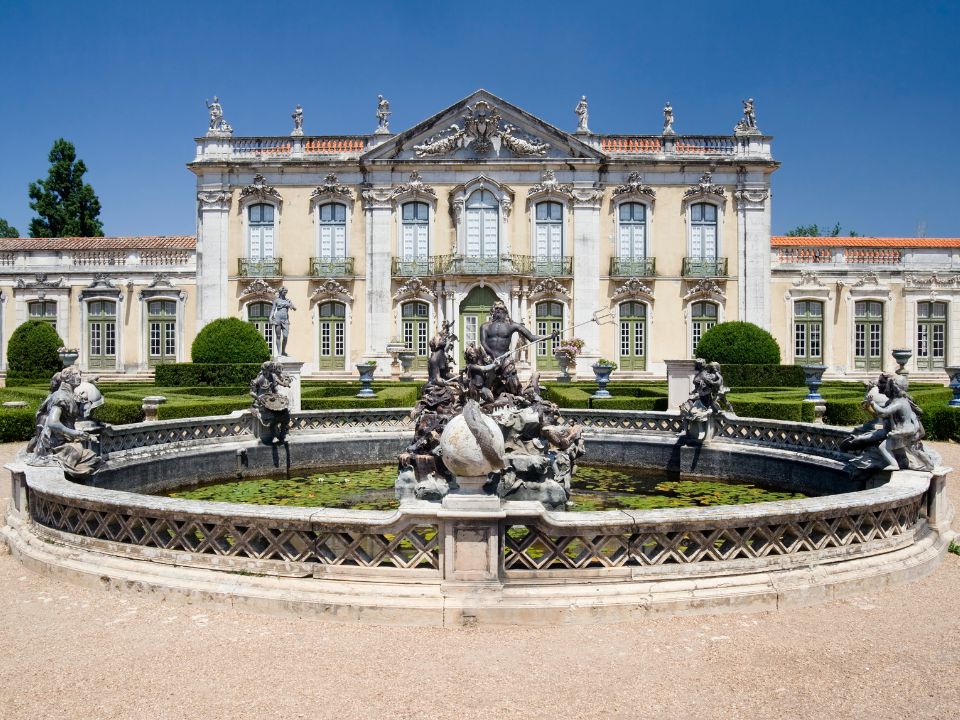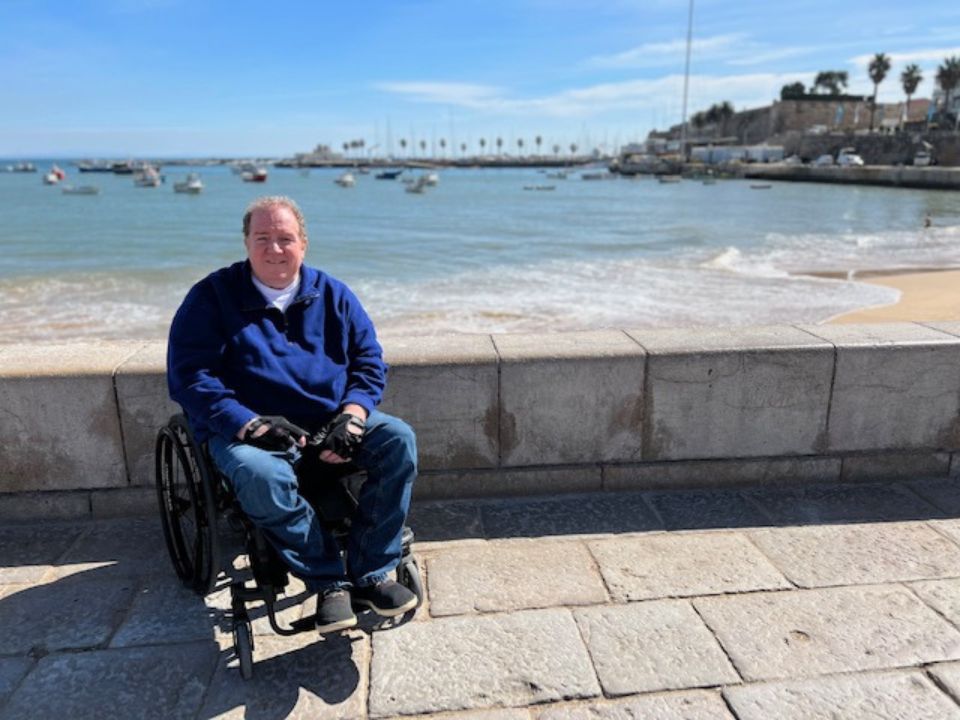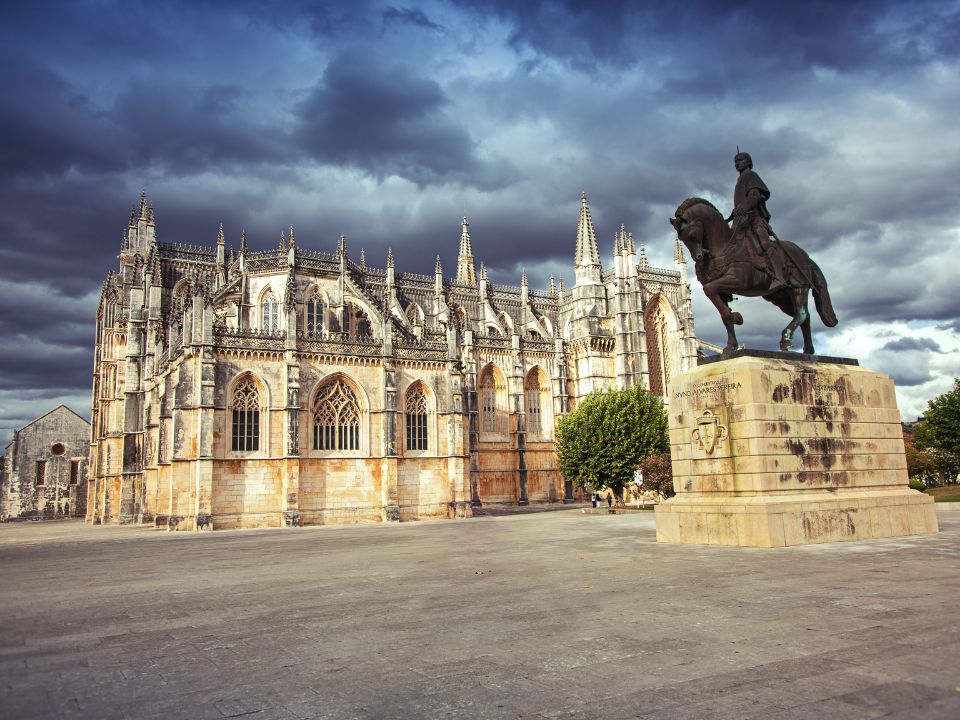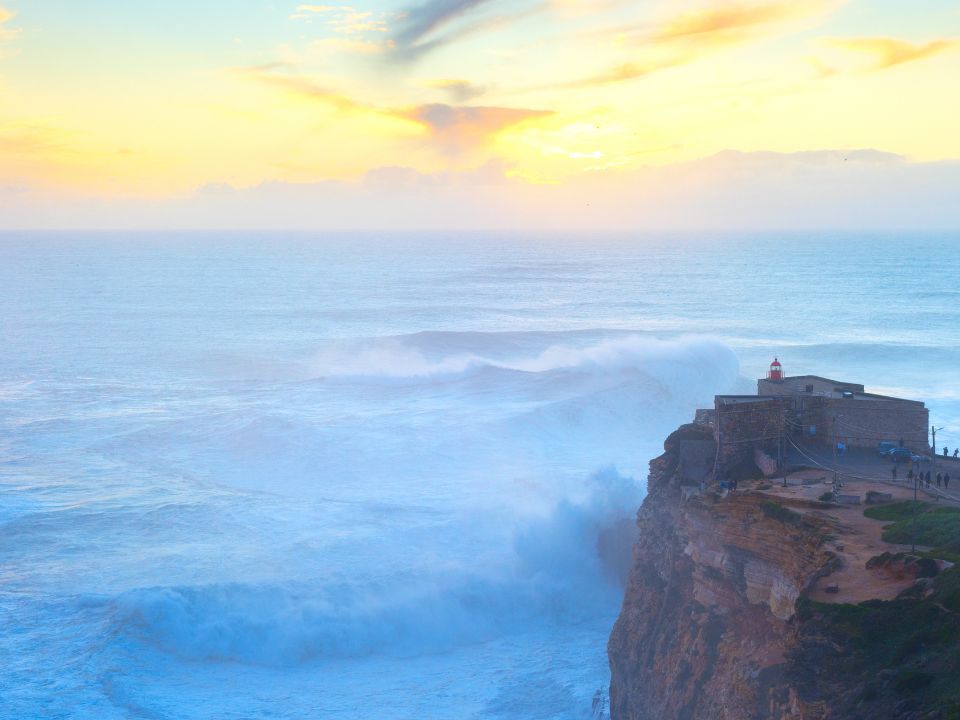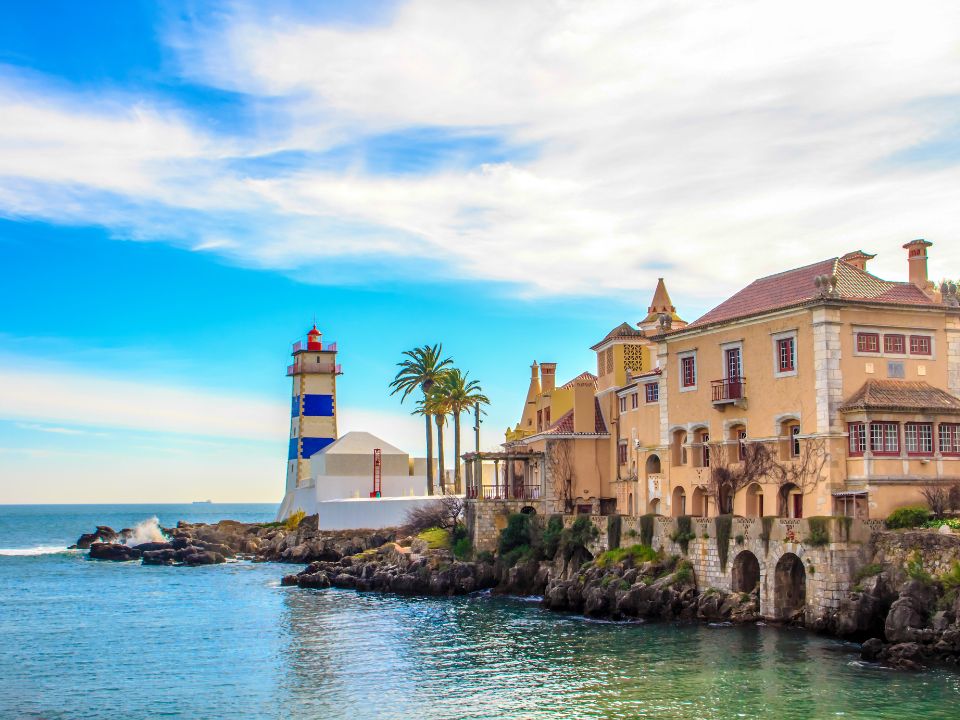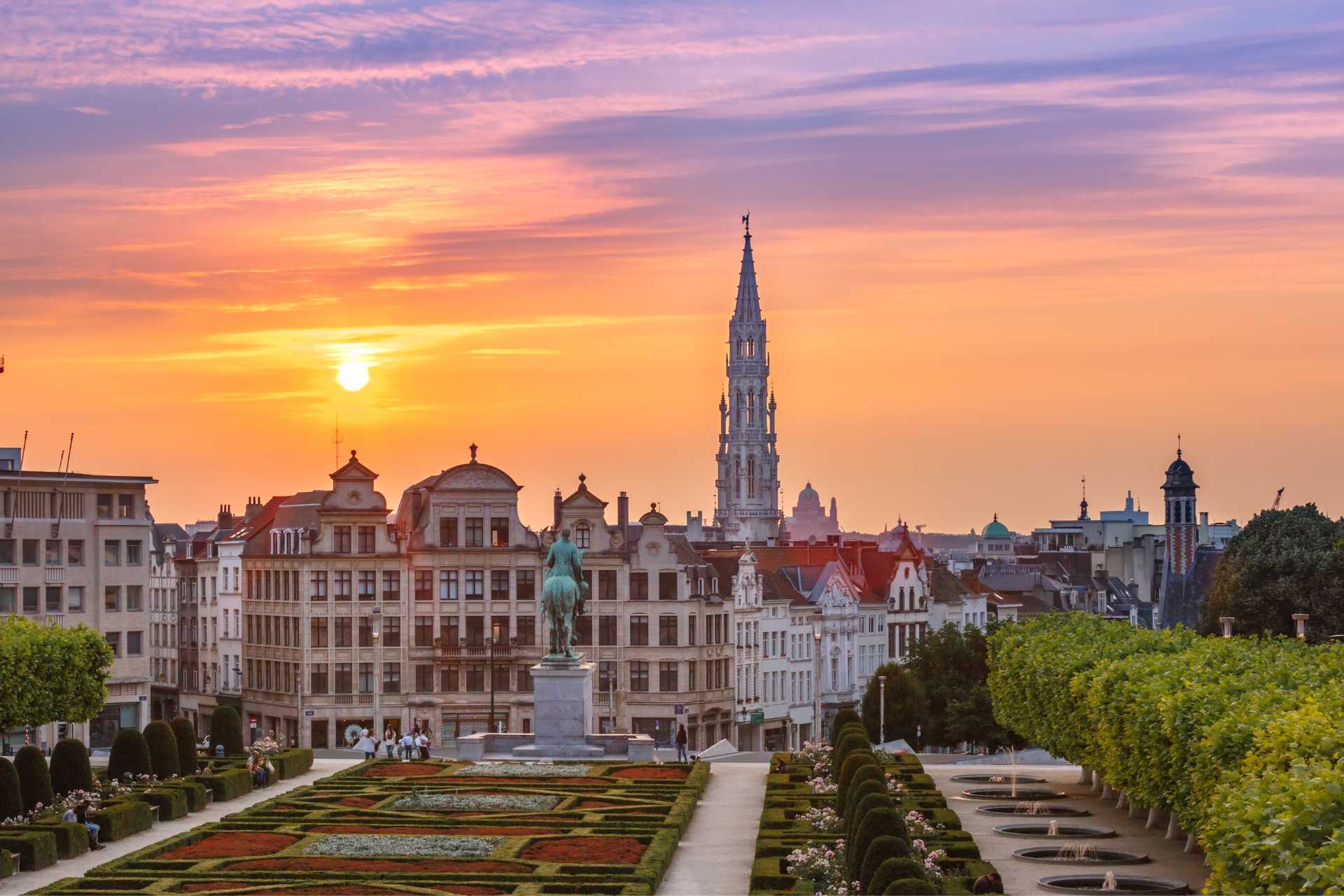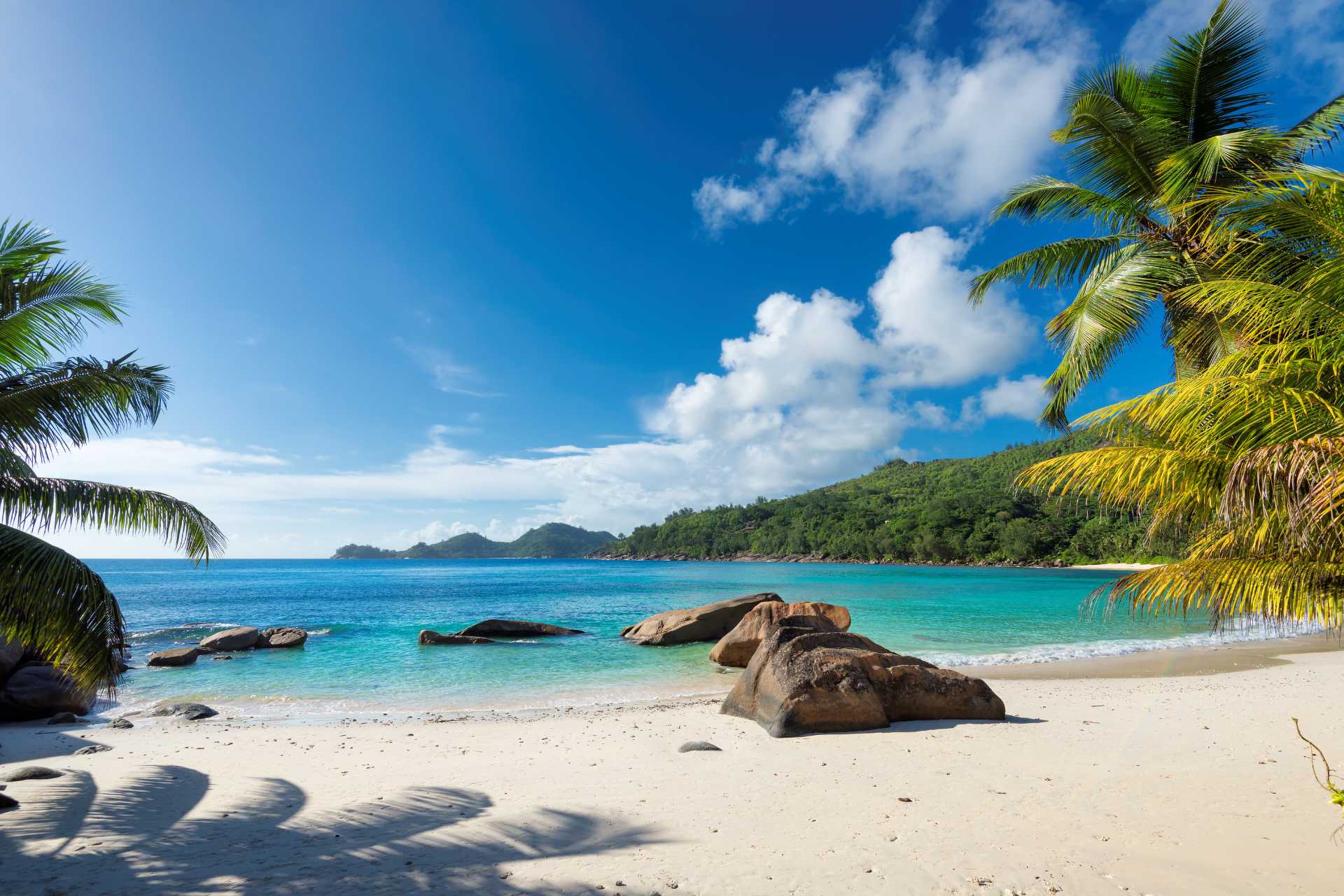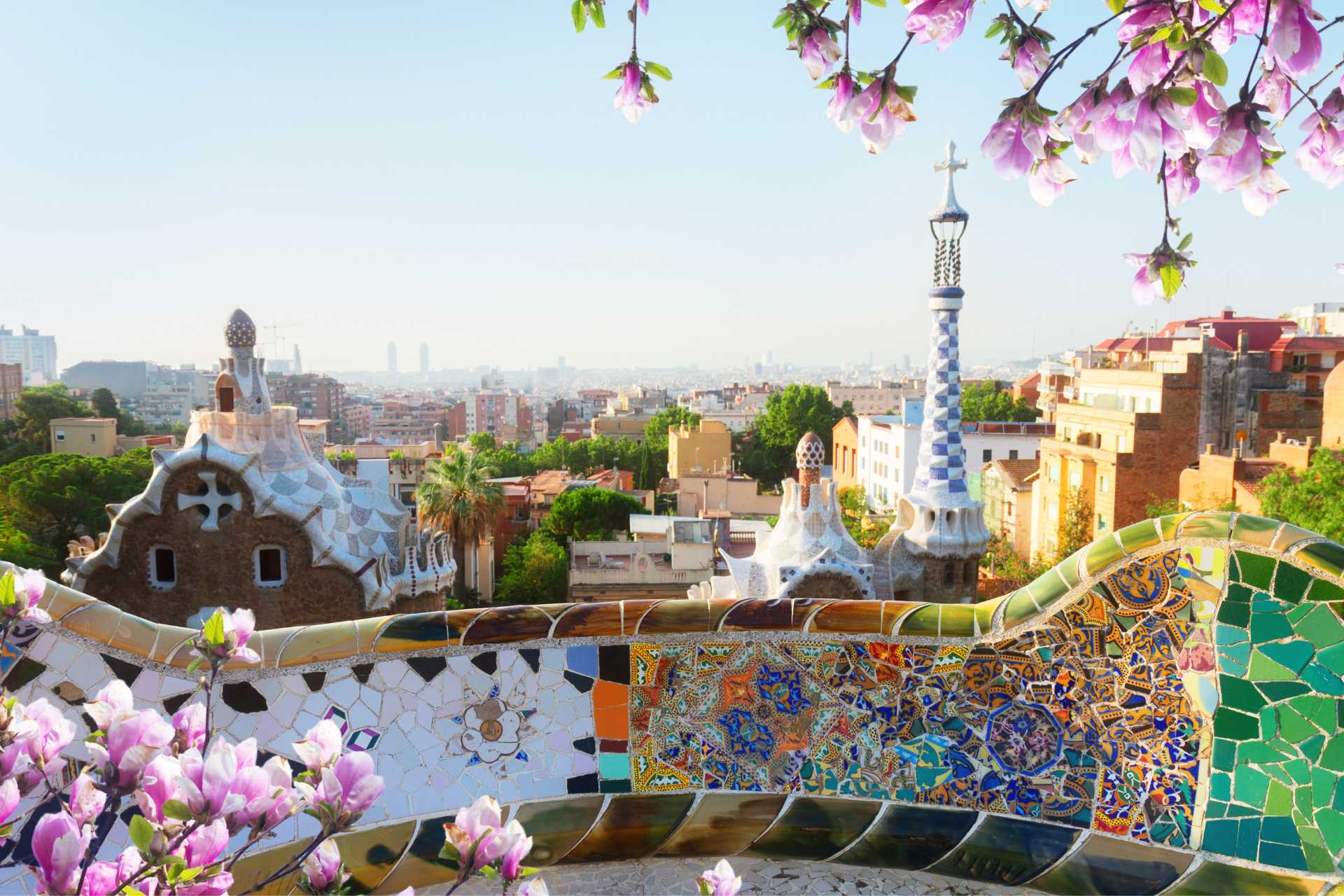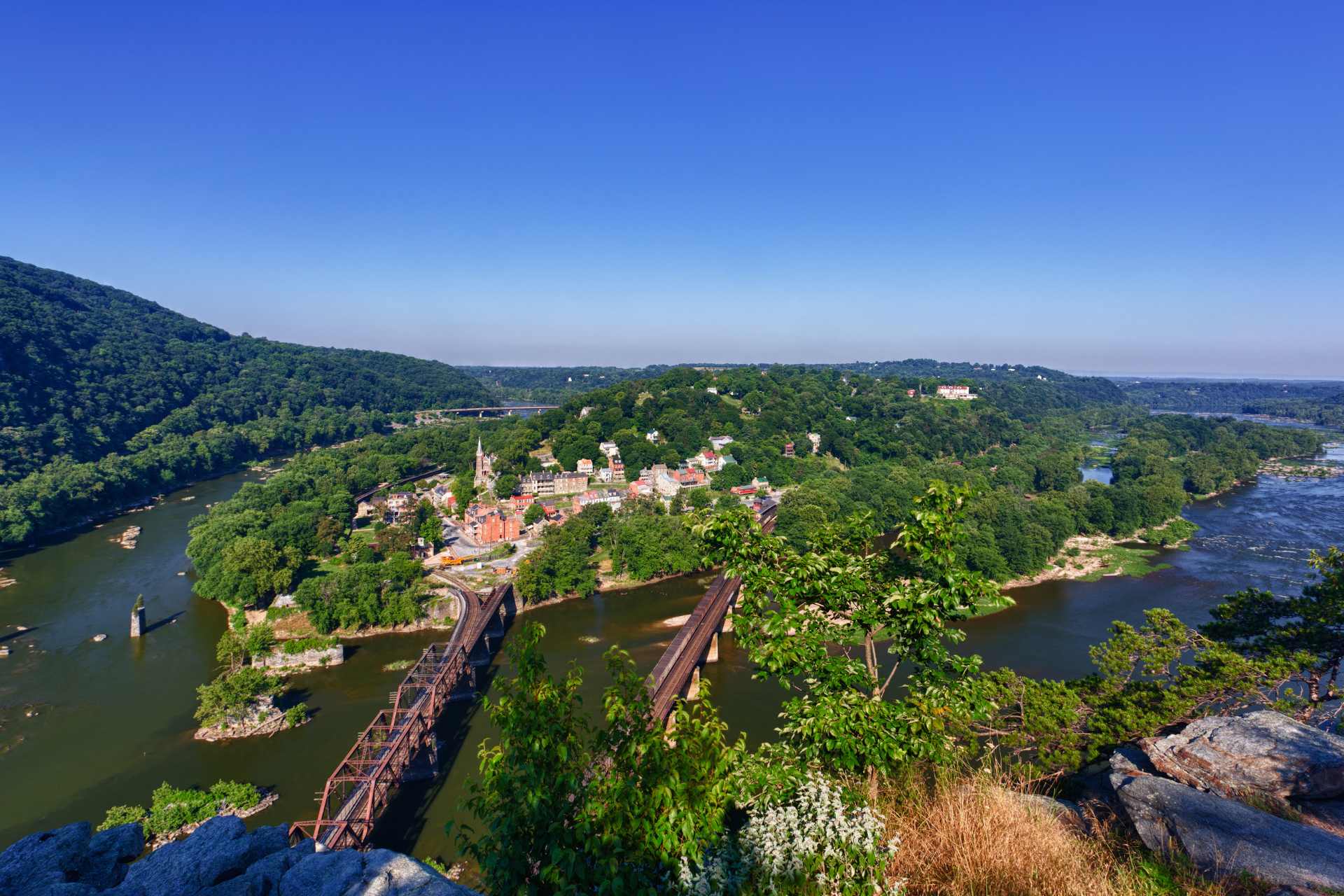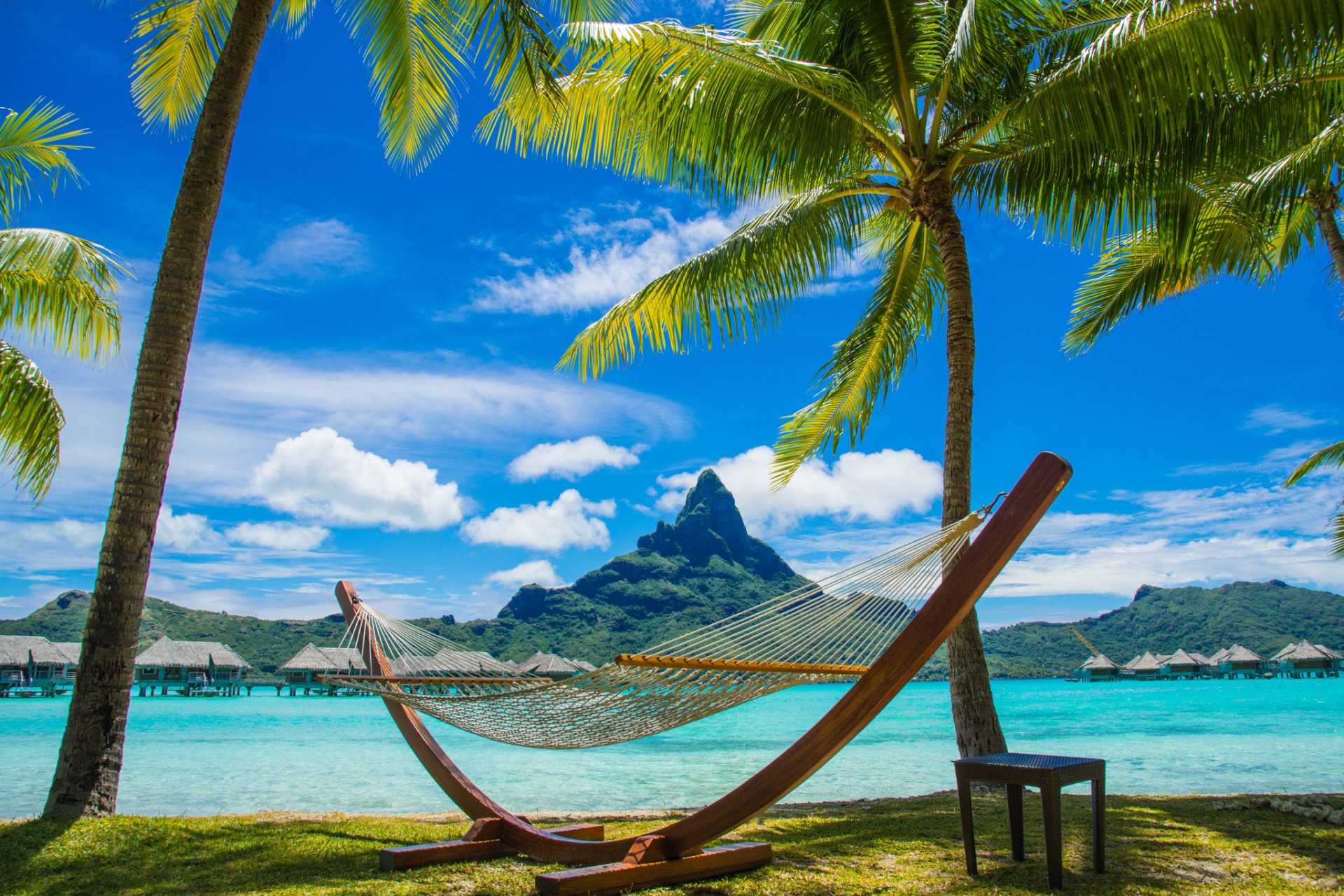Exploring Accessible Portugal
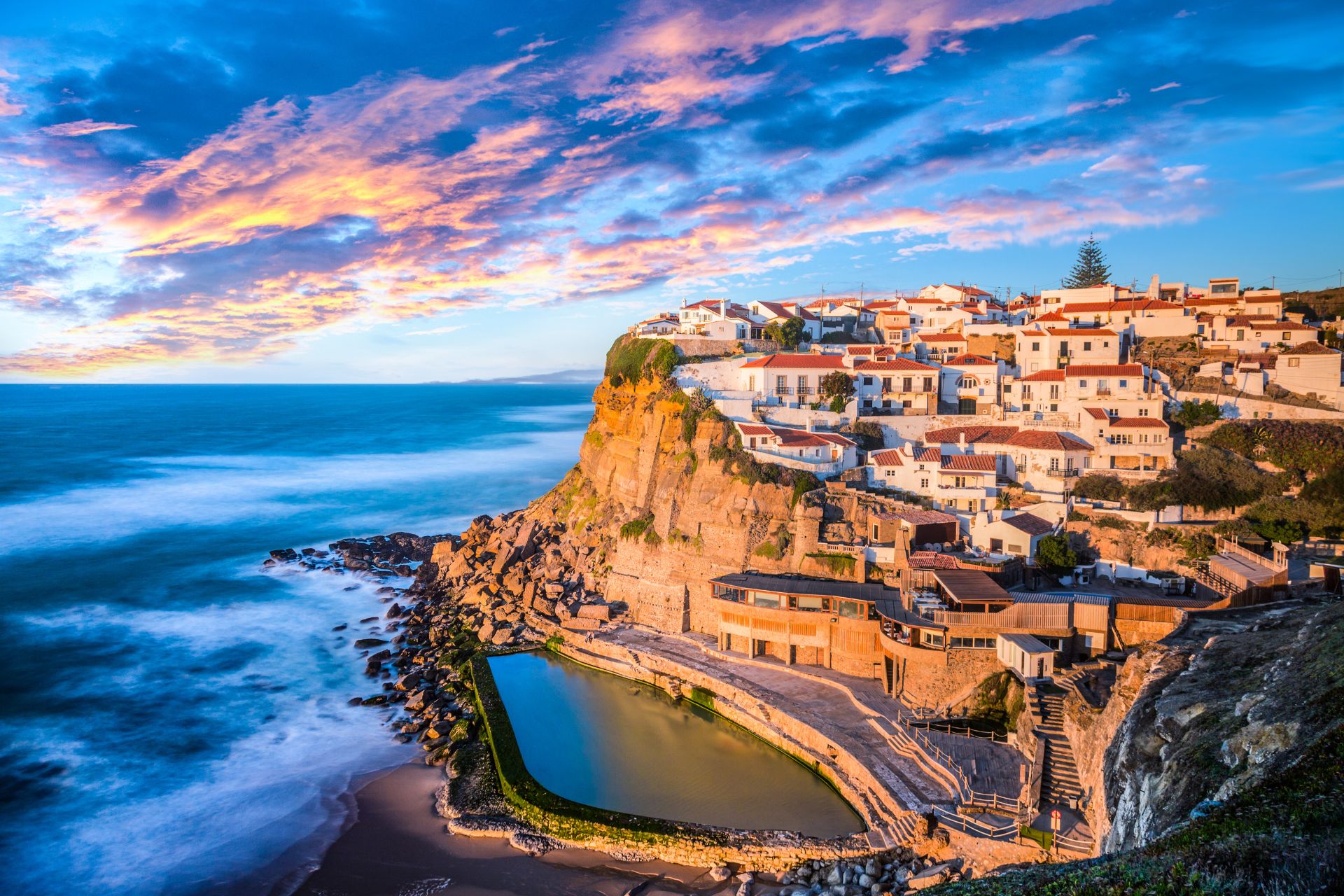
Arrival in Portugal
The trip started off with a canceled British Airways flight out of Philadelphia so I missed the first day’s events, but I joined the group seamlessly the next afternoon thanks to careful planning and coordination by the Tourism for All team, including driver, Ricardo, and trip coordinator, Carolina. As we left the airport grounds and made our way first on the highway and then through neighborhood streets, I was quickly captivated by Portugal’s simplicity, beauty, and mostly it’s history, and my trip had only just begun.
National Tile Museum
As we arrived at the Madre de Deus Convent, founded in 1509, the National Tile Museum was the not-so-best-kept secret within its walls. The Tile Museum has numerous displays that are dedicated to the traditional tile work of Portugal and the former Portuguese Empire. At the end of our museum tour, our group was treated to our own workshop where we painted our own tiles which were fired in the historic kilns.
Hotel Stay and Accessibility
We left the museum at dusk to go to our hotel, the Vila Gale, to have dinner along with a great conversation with our host, Tourism for All, and the Director of our hotel. Definitely a long day and I could not wait to get a good night’s rest. The room in our modern hotel was accessible with proper bed height, great floor space for wheelchair navigation, and an accessible bathroom with roll-in shower with grab bars on one wall.
Royal Palace of Queluz
After a hearty and delicious buffet breakfast in the hotel the next morning, we checked out of the hotel and boarded our accessible tour bus for the Royal Palace of Queluz. The entrance and parking lot was a bit bumpy with cobblestones but could be navigated in a wheelchair with a little assistance and patience. Once inside, the marble and tile floors and wide doorways made it very easy to navigate and explore. This is an historic building with no heat and with open windows and doorways, so it was quite chilly inside and you should dress accordingly.
Scenic Drive to Cascais
Our drive along the serene beaches to our next stop was scenic and, in some ways, peaceful. The empty beaches and crashing waves were alluring and dotted by oceanside restaurants and places where you could stop and enjoy the view. We had reservations at the Furnas de Guincho restaurant and you could not ask for a more perfect place to have a meal. Resting on the small stone cliffs literally at the ocean’s edge, our group enjoyed a succulent meal of steamed shrimp appetizer, a traditional shrimp and clam soup, followed by a bowl of fresh fruit topped with a raspberry gelato. I could have easily spent the rest of the day here on the outdoor deck and wrap around bar area overlooking the ocean.
Cabo da Roca: Westernmost Point
It felt as if the roads became more narrower as we drove to Cabo da Roca with little or no guard rails to prevent any vehicle from plunging off the edge into steep ravines below – all of which added a little excitement to the drive, even though we had no worries thanks to the expert driving by Susana. We arrived at Cabo da Roca just about an hour and a half before sunset and it seemed like the timing was perfect. We made our way off the bus and down a small accessible pathway to the monument which officially marked Cabo da Roca. It was remarkable to be at that point at the right time and watch the sunset as we gazed across the ocean.
Hotel Villa Batalha and Monastery Visit
We left Cabo da Roca to head to our next hotel, the Hotel Villa Batalha. The hotel was situated in Batalha and literally a short walk from the magnificent Monastery of Batalha. The Monastery was built to commemorate the victory of the Portuguese over the Castilians at the battle of Aljubarrota in 1385. We checked into our rooms which were quite accessible and very modern and then met for dinner in the hotel. Once again, the food was a delicious array of seafood and vegetables.
Accessibility Features and Local Exploration
Hotel’s Accessibility Tour – Aljubarrata’s Battle Interpretation Center
The next morning, we met in the restaurant for a fulfilling breakfast and then met with the hotel manager to take a tour of the hotel’s accessibility features, including accessible guest rooms and the Spa. In order to serve guests with disabilities, the massage tables in the Spa could be raised or lowered and the hotel had access to Tourism for All’s hoist in the event someone with a disability wanted to use the hot tub or indoor pool. We left the hotel on our accessible tour bus and drove to the Interpretation Center of Aljubarrata’s Battle.
Nazare: A Coastal Gem
After we left the museum, we took a short drive to a local restaurant and once again enjoyed traditional Portuguese food. After lunch we were free to explore the local area on our own. I wheeled over to the Batalha Monastery and toured the magnificent structure. That evening we enjoyed dinner in the hotel restaurant as a group.
Praca do Comercio
After breakfast the next morning, we checked out of the hotel and drove to the Alcobaca Monastery, one of the first Gothic monuments built in Portugal in the 12th century and founded by King Alfonso I. The Monastery is 120 km north of Lisbon. We entered the monastery through a man-made ramp and then once inside found much of the structure to be accessible with ramps and wide doorways.
Accessibility
Overall, I was surprised at just how accessible the areas of Portugal I toured were. It’s not perfect and it’s not what you will find in the United States. Portugal is a much older country with a rich history of battles and wars and where older and historic structures are revered. This puts enormous burdens on trying to make these structures “accessible” given budgets, etc. Sidewalks are primarily made of 3” by 3” square stones, almost tile-like, and many of them are not even which will give anyone using a mobility device a bumpy ride. Many ramps are made of wood and are not permanent structures made of concrete or steel.
There are curb cuts at many corners and crossways, but it is rare that you ever see anything like truncated domes or anything tactile for people who are blind or low-vision. In more modern buildings you will see Braille signage in elevators, but I didn’t see it anywhere else. I was not aware of any type of accommodation for people who are deaf or for those on the spectrum. Beds in many hotels are single, twin beds.
If you want a larger bed, the hotel will move two twin beds together. I did not see any accessible taxis but I did hear from a colleague on our trip that the train and platform were accessible – but the accessibility from station to station varies. Another thing to keep in mind is that the ticket counters at the airport open at 4:30 AM, so if you have an early flight, there is really no need to arrive before then as I did.
Planning in advance
If you have a disability and you want to experience the richness of Portugal’s history, people, food, and culture, I highly recommend planning your trip with Tourism for All. They have trained and capable staff. They have a fleet of 34 accessible vehicles – from smaller accessible vans for a single wheelchair and guest, all the way up to two full-size, accessible tour busses with side lifts. And, their tour guides are amazing.
Another thing to consider is the weather. Our trip took place during the first week of March. Average temperatures were low to mid-50-degrees with nights dipping into the 40’s. A couple of days were sunny, some were cloudy, and we even had a couple of days of cold rain showers. Just be prepared to dress warmly and to bring rain gear. There are plenty of sites to see indoors should you get rain.
